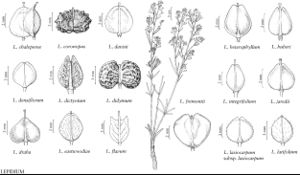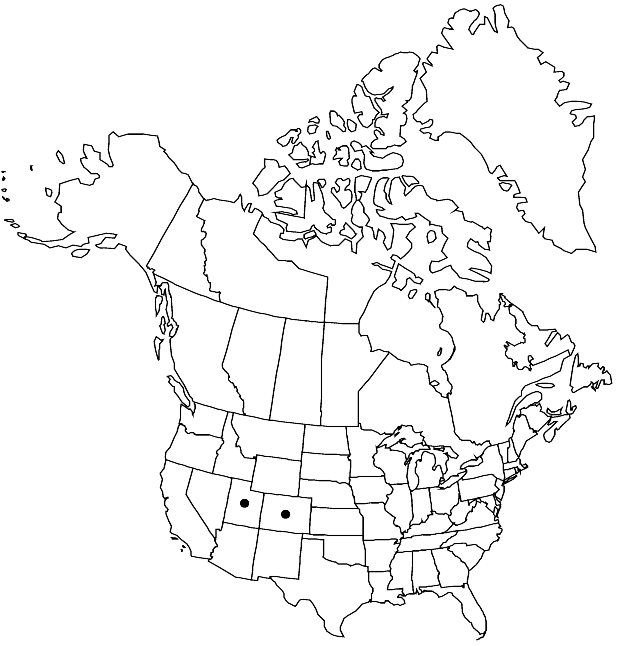Lepidium huberi
Great Basin Naturalist 55: 359, fig. 1. 1995.
Perennials or subshrubs; (caudex to 2 cm diam., woody base aboveground); puberulent. Stems several from base, erect to ascending, branched distally, (1.8–)3–6(–7) dm. Basal leaves not rosulate; petiole 1–3 cm; blade ovate to lanceolate, pinnatifid, 1–4.5 cm × 8–25 mm, margins (of lobes) entire. Cauline leaves shortly petiolate or sessile; blade lanceolate to oblanceolate, 1.8–3.5 cm × 3–10 mm (smaller distally), base cuneate, not auriculate, margins entire or coarsely serrate. Racemes (subcorymbose panicles), individual racemes slightly elongated; rachis puberulent, trichomes straight. Fruiting pedicels divaricate to horizontal, straight or slightly curved, (not winged), 4–7 × 0.2 mm, puberulent throughout. Flowers: sepals suborbicular to broadly ovate, 1.2–2 × 1.2–1.5 mm; petals white, suborbicular to obovate, 2–3.2 × 1.5–2 mm, claw 0.5–1 mm; stamens 6; filaments 1.4–1.7 mm, (glabrous); anthers 0.4–0.5 mm. Fruits often broadly obovate, 2–3.3 × 1.8–2.5 mm, apically winged, apical notch 0.1–0.2 mm deep; valves thin, smooth, not veined, glabrous; style 0.2–0.8 mm, exserted beyond apical notch. Seeds ovate, 1.4–1.6 × 0.8–1 mm.
Phenology: Flowering Jul–Aug.
Habitat: Pine and sagebrush communities
Elevation: 1500-3000 m
Discussion
Of conservation concern.
Lepidium huberi is known in Colorado from Rio Blanco County and in Utah from Uintah County.
Selected References
None.

